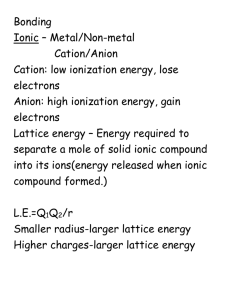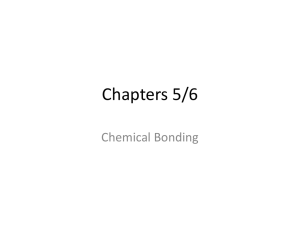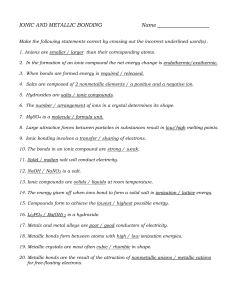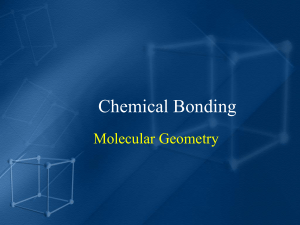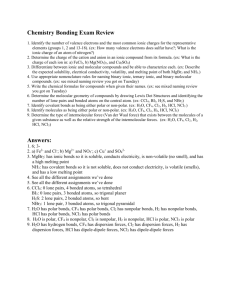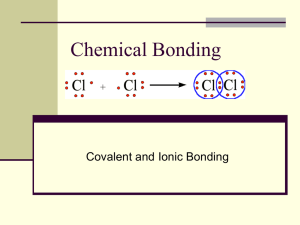The Chemical Bond III
advertisement
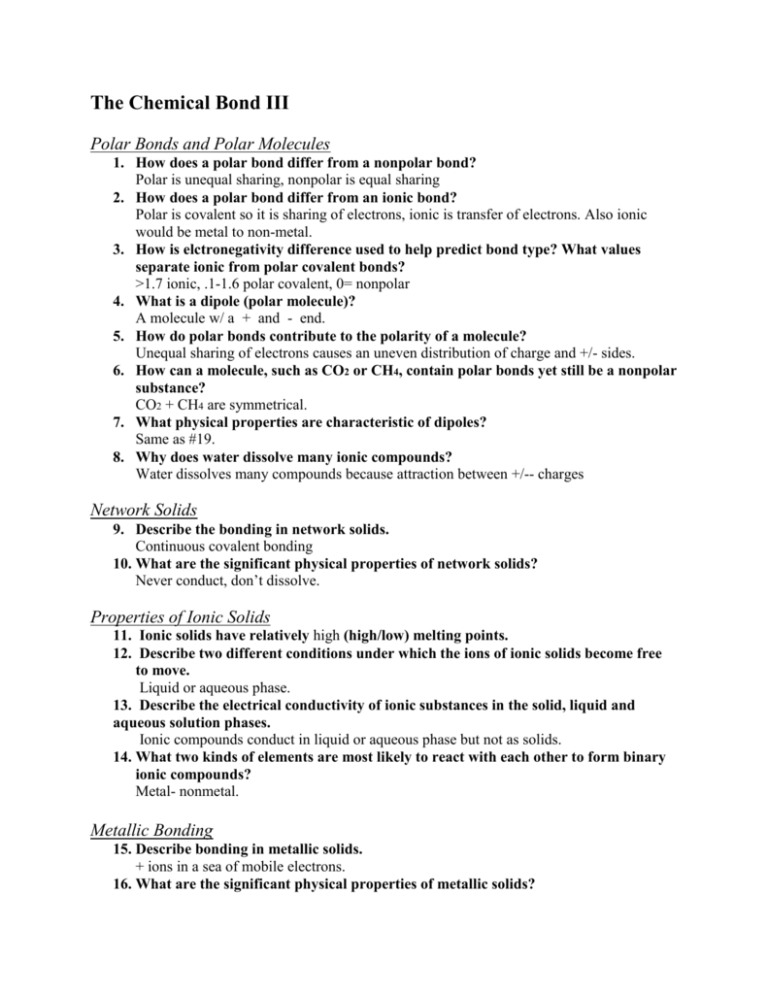
The Chemical Bond III Polar Bonds and Polar Molecules 1. How does a polar bond differ from a nonpolar bond? Polar is unequal sharing, nonpolar is equal sharing 2. How does a polar bond differ from an ionic bond? Polar is covalent so it is sharing of electrons, ionic is transfer of electrons. Also ionic would be metal to non-metal. 3. How is elctronegativity difference used to help predict bond type? What values separate ionic from polar covalent bonds? >1.7 ionic, .1-1.6 polar covalent, 0= nonpolar 4. What is a dipole (polar molecule)? A molecule w/ a + and - end. 5. How do polar bonds contribute to the polarity of a molecule? Unequal sharing of electrons causes an uneven distribution of charge and +/- sides. 6. How can a molecule, such as CO2 or CH4, contain polar bonds yet still be a nonpolar substance? CO2 + CH4 are symmetrical. 7. What physical properties are characteristic of dipoles? Same as #19. 8. Why does water dissolve many ionic compounds? Water dissolves many compounds because attraction between +/-- charges Network Solids 9. Describe the bonding in network solids. Continuous covalent bonding 10. What are the significant physical properties of network solids? Never conduct, don’t dissolve. Properties of Ionic Solids 11. Ionic solids have relatively high (high/low) melting points. 12. Describe two different conditions under which the ions of ionic solids become free to move. Liquid or aqueous phase. 13. Describe the electrical conductivity of ionic substances in the solid, liquid and aqueous solution phases. Ionic compounds conduct in liquid or aqueous phase but not as solids. 14. What two kinds of elements are most likely to react with each other to form binary ionic compounds? Metal- nonmetal. Metallic Bonding 15. Describe bonding in metallic solids. + ions in a sea of mobile electrons. 16. What are the significant physical properties of metallic solids? Conduct in all phases (solid, liquid, gas), very high melting point/ boiling point. Hydrogen Bonding 17. Draw a diagram to illustrate hydrogen bonding between molecules of HF. 18. Under what circumstances do hydrogen bonds form? Hydrogen bonded to a highly electronegative. 19. What properties are associated with compounds containing hydrogen bonds? High BP/MP compared to other covalent compounds, can form crystalline solids and surface tension. Van der Waals Forces 20. What is the source of Van der Waals forces? Temporary shift in the electron clouds in the nonpolar molecules. 21. What factors determine the magnitude of the Van der Waals forces acting between molecules? Size of molecule, bigger = stronger. 22. What properties are associated with Van der Waals forces? Nonpolar molecules that can exist in liquid or solid form, MP/BP.

